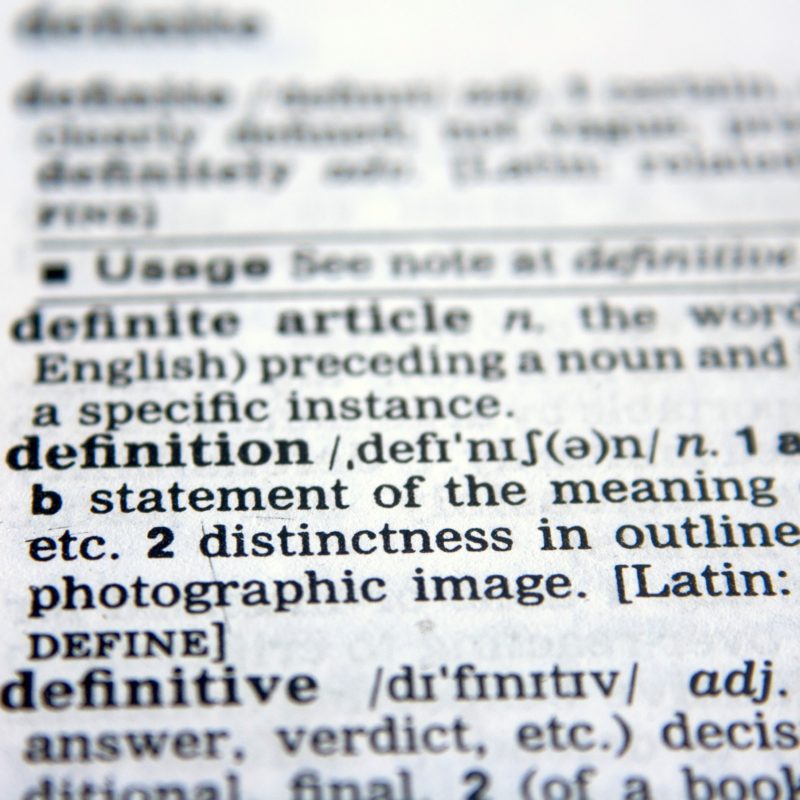In seeking to develop an understanding of deception, perhaps an obvious place to start is with a dictionary definition of the term. However, dictionaries turn-out to be surprisingly poor sources for those seeking clarity on the topic. For example, the Oxford Dictionary of English defines deception as:
“[To] deliberately cause (someone) to believe something that is not true, especially for personal gain.”
Oxford English Dictionary (2016)
This definition falls short in several respects. First, it implies that truth or falsehood is a binary either-or state (i.e. things are true, or not true), and does not consider the possibility of varying degrees of truth, partial truths, subjective truths, contested truths, and unknown truths (for an excellent exposition of the complex nature of truth, see MacDonald, 2018). A second problem is that the definition cannot accommodate situations in which a deceiver wishes their target to not believe a situation that is true. The definition, therefore, is unable to accommodate situations in which an entity is operating covertly, and wishes the target to have no suspicion, let alone belief as to their real identity or behaviour. A third, more fundamental problem with this definition is that it is entirely feasible to deceive a target without lying and by communicating using nothing but the truth. This form of deceptive strategy is referred to as ‘paltering’ (Rogers et al., 2017), and can be lingual or temporal. This important and often overlooked fact highlights the limited utility and value of lying and lie-detection paradigms for making sense of the broader field of deception.
Some years ago, I formulated a working definition of deception that sought to address these concerns and set the notion of deception against a more contemporary, pragmatic and practical psychological foundation. Over the intervening years, the definition has remained extant in the face of extensive road-testing, critique and utilisation by many hundreds of deception practitioners from across a wide variety of different professional domains. Deception is defined as:
“Deliberate measures to induce erroneous sensemaking and subsequent behaviour within a target audience, to achieve and exploit an advantage.”
Henderson (2011)
Let us consider the different components of this definition:
Deception is a Deliberate Act. The definition begins by suggesting that deception is a deliberate and intentional act, a view shared with a range of other authors and researchers in the field (such as Buller & Burgoon, 1994; Galasinski, 2000; Caspi & Gorsky, 2006; Carrion et al., 2010). As a result, activities that unintentionally or accidentally induce erroneous sensemaking are non-deceptive acts that should more accurately be labelled as mistakes, misinterpretations, misunderstandings, gaffs, etc. It is therefore not possible to deceive by accident.
Deception is Induced. Deception is brought about via a process of induction. A deceiver deliberately engages in a specific action or actions that are intended to fool the target. Deception does not, and cannot, happen by itself.
Deception Works by Inducing Errors in Sensemaking. A key component of this definition relates to the notion of ‘erroneous sensemaking’, meaning that some aspect of the target’s understanding of the world is deliberately led to be wrong, or in error. It is this focus on error that differentiates deception from other related concepts, such as influence, persuasion or coercion, etc. For an explanation of how sensemaking functions, see Klein et al. (2006b, 2006a); and Klein et al. (2007).
The Goal of Deception is Behaviour Change. Deception aims to change the future behaviour of the target. If there is no behavioural change in the target resulting from their erroneous sensemaking, the same outcome could and would have been achieved by the deceiver doing nothing.
Deception is Directed Towards a Defined Target Audience. Deception is directed towards a specific, identified and bounded target audience. The deception target may be an individual, a team, an organisation, a larger grouping of organisations, and potentially even a higher-level collective entity such as a nation-state. A target may also comprise any system that exhibits some form of behaviour, and within which behaviour change may be sought, including computer software, an algorithm, hardware control systems, etc.
Successful Deception Creates Advantage for the Deceiver, and Sometimes the Target. Deception is conducted to obtain an exploitable advantage for the deceiver, and can also result in mutual benefit, wherein both the deceiver and the target gain benefit when the deception is successful.
This definition is by no means ‘the answer’ (i.e. a fully-formed, unambiguous encapsulation and articulation of precisely what deception ‘is’!). Nonetheless, the definition provides a stable foundation that helps bound the topic of interest, upon which a range of other theoretical and practical deceptive components can be built.
References
Buller, D. B., & Burgoon, J. K. (1994). Deception: Strategic and Nonstrategic Communication. In J. A. Daly & J. M. Wiemann (Eds.), Strategic Interpersonal Communication (pp. 191-223). Lawrence Erlbaum: Hillsdale, New Jersey.
Carrion, R. E., Keenan, J. P., & Sebanz, N. (2010). A Truth That’s Told With Bad Intent: An ERP Study of Deception. Cognition, 114(1), 105-110
Caspi, A., & Gorsky, P. (2006). Online Deception – Prevelence Motivation and Emotion. Cyber Psychology and Behavior, 9(1), 54-59.
Galasinski, D. (2000). The Language of Deception: A Discourse Analytical Study. Thousand Oaks, California: Sage Publications.
Henderson, S. M. (2011). Deceptive Thinking Workshop. Paper presented at the 1st MilDec Military Deception Symposium, 2nd-3rd November 2011, Defence Academy of the United Kingdom, Shrivenham.
Klein, G., Moon, B., & Hoffman, R. R. (2006a). Making Sense of Sensemaking 1: Alternative Perspectives. IEEE Intelligent Systems, 21(4), 70-73.
Klein, G., Moon, B., & Hoffman, R. R. (2006b). Making Sense of Sensemaking 2: A Macrocognitive Model. IEEE Intelligent Systems, 21(5), 88-92.
Klein, G., Philips, J. K., Rall, E. L., & Peluso, D. A. (2007). A Data-Frame Theory of Sensemaking. In R. Hoffman (Ed.), Expertise Out of Context: Proceedings of the Sixth Conference on Naturalistic Decision MakingNew York, NY: Lawrence Erlbaum Associates. 113-155.
MacDonald, H. (2018). Truth: How the Many Sides to Every Story Shape Our Reality. New York: Little, Brown and Company.
Oxford English Dictionary. (2016). Definition of ‘Deception’. Oxford: Oxford University Press.
Rogers, T., Zeckhauser, R., Gino, F., Norton, M. I., & Schweitzer, M. E. (2017). Artful Paltering: The Risks and Rewards of Using Truthful Statements to Mislead Others. J Pers Soc Psychol, 112(3), 456-473.


